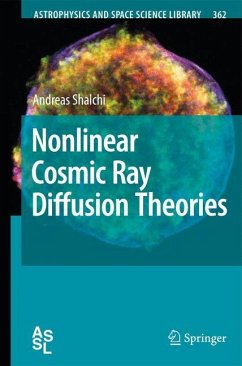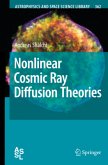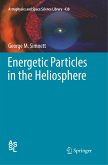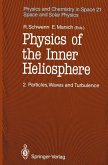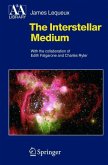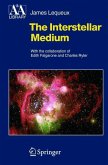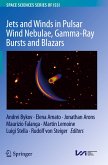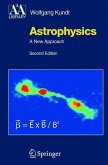This book deals with the physics of cosmic ray diffusion theory, focusing on the physics of nonlinear transport of cosmic rays through turbulent interplanetary or interstellar plasma.
The author discusses fundamental processes such as cosmic ray propagation and acceleration in the solar system or in interstellar space, the properties of such plasmas, the standard quasilinear approach to describing plasma-particle interactions as well as several more accurate nonlinear theories. Within a nonlinear treatment he revisits the mechanism of diffusive shock acceleration, which is responsible for the high cosmic ray energies. Based on new results presented in this book the author proposes future numerical, theoretical and observational research that could advance the field of cosmic ray diffusion theory.
If charged particles move through the interplanetary or interstellar medium, they interact with a large-scale magnetic ?eld such as the magnetic ?eld of the Sun or the Galactic magnetic ?eld. As these background ?elds are usually nearly constant in time and space, they can be approximated by a homogeneous ?eld. If there are no additional ?elds, the particle trajectory is a perfect helix along which the par- cle moves at a constant speed. In reality, however, there are turbulent electric and magnetic?elds dueto the interstellaror solar wind plasma. These ?elds lead to sc- tering of the cosmic rays parallel and perpendicular to the background ?eld. These scattering effects, which usually are of diffusive nature, can be described by s- tial diffusion coef?cients or, alternatively, by mean free paths. The knowledge of these parameters is essential for describing cosmic ray propagation as well as d- fusive shock acceleration. The latter process is responsible for the high cosmic ray energies that have been observed. The layout of this book is as follows. In Chap. 1, the general physical scenario is presented. We discuss fundamental processes such as cosmic ray propagation and acceleration in different systems such as the solar system or the interst- lar space. These processes are a consequence of the interaction between charged cosmic particles and an astrophysical plasma (turbulence). The properties of such plasmas are therefore the subject of Chap. 2.
The author discusses fundamental processes such as cosmic ray propagation and acceleration in the solar system or in interstellar space, the properties of such plasmas, the standard quasilinear approach to describing plasma-particle interactions as well as several more accurate nonlinear theories. Within a nonlinear treatment he revisits the mechanism of diffusive shock acceleration, which is responsible for the high cosmic ray energies. Based on new results presented in this book the author proposes future numerical, theoretical and observational research that could advance the field of cosmic ray diffusion theory.
If charged particles move through the interplanetary or interstellar medium, they interact with a large-scale magnetic ?eld such as the magnetic ?eld of the Sun or the Galactic magnetic ?eld. As these background ?elds are usually nearly constant in time and space, they can be approximated by a homogeneous ?eld. If there are no additional ?elds, the particle trajectory is a perfect helix along which the par- cle moves at a constant speed. In reality, however, there are turbulent electric and magnetic?elds dueto the interstellaror solar wind plasma. These ?elds lead to sc- tering of the cosmic rays parallel and perpendicular to the background ?eld. These scattering effects, which usually are of diffusive nature, can be described by s- tial diffusion coef?cients or, alternatively, by mean free paths. The knowledge of these parameters is essential for describing cosmic ray propagation as well as d- fusive shock acceleration. The latter process is responsible for the high cosmic ray energies that have been observed. The layout of this book is as follows. In Chap. 1, the general physical scenario is presented. We discuss fundamental processes such as cosmic ray propagation and acceleration in different systems such as the solar system or the interst- lar space. These processes are a consequence of the interaction between charged cosmic particles and an astrophysical plasma (turbulence). The properties of such plasmas are therefore the subject of Chap. 2.

